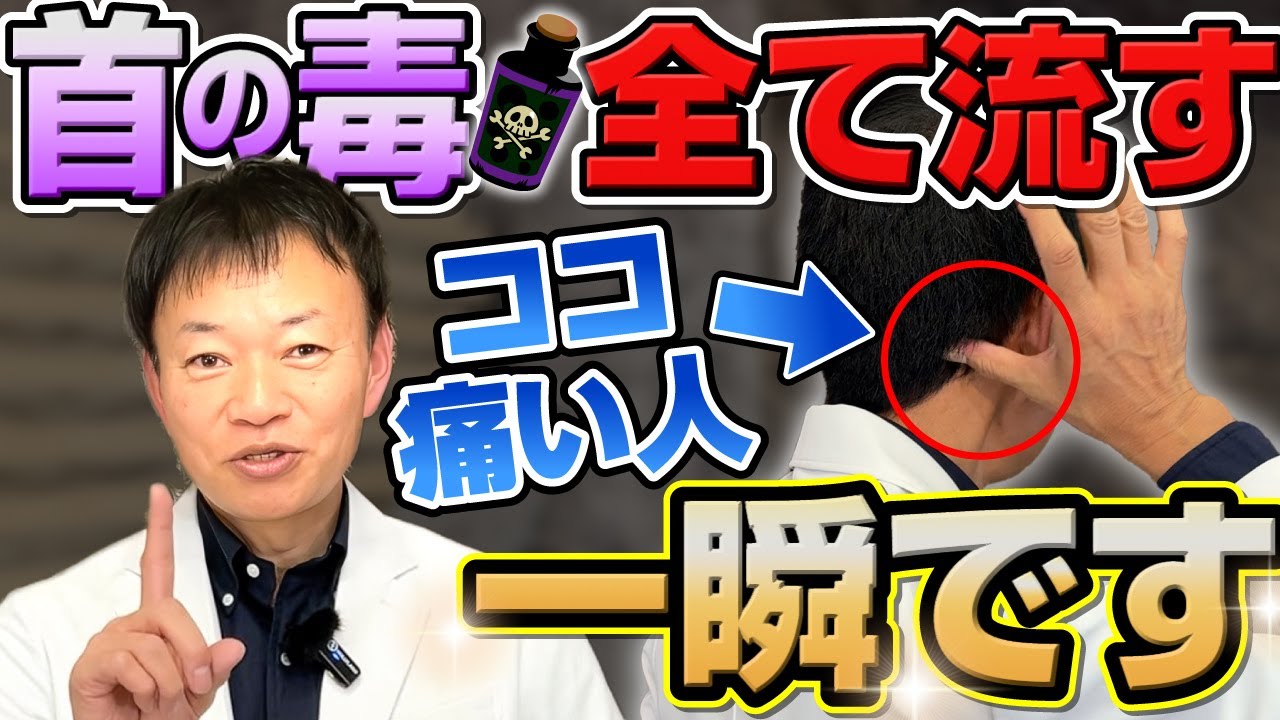This Neck Technique Can Change Your Life...Neck Pain, Tinnitus, Headaches, Brain Fog! Dr. Mandell
Summary
TLDRThis script discusses the prevalence of neck problems and their impact on health. It identifies the sternocleidomastoid (SCM) muscle as a common source of neck issues, linking it to various symptoms like headaches, tingling, and vertigo. The speaker introduces techniques like cross-fiber massage, PNF stretching, and chin tucks to alleviate pain and improve mobility. These methods aim to release muscle tension, increase blood flow, and reduce nerve compression, offering a proactive approach to neck health.
Takeaways
- 🌐 Millions of people worldwide suffer from neck problems, which can lead to various health issues.
- 🔍 The neck plays a crucial role in health as it houses the spine and nerves that connect to the brain.
- 🚨 Common neck issues include bulging or herniated discs, and degenerative conditions that increase with age.
- 🤕 Neck problems can cause headaches, neck pain, shoulder blade pain, and even symptoms like tingling, numbness, and vertigo.
- 🔄 It's essential to be proactive about neck health, especially when experiencing chronic pain or limited mobility.
- 💆♂️ One of the primary muscles involved in neck problems is the sternocleidomastoid (SCM), which can refer pain to other areas.
- 🔪 A recommended technique for neck pain is cross-fiber massaging, which can be done with a tool like a fork or the edge of a hand.
- 🤲 The use of a 'knife edge' for massaging the SCM muscle can help release tension and improve range of motion.
- 🧠 PNF (Proprioceptive Neuromuscular Facilitation) stretching is a technique that can trick the brain into releasing tight muscles.
- 🔄 Combining cross-fiber and longitudinal massages can further enhance muscle release and alleviate pain.
- 👐 The anterior part of the SCM muscle near the throat can be a source of hidden problems, affecting swallowing and causing chronic coughing.
Q & A
What are some common neck problems that people experience?
-Common neck problems include headaches, neck pain, pain in the shoulder blades, radiation of pain into the shoulders, chest or arm, tingling, numbness, cramping, tenus, ringing in the ears, vertigo, lightheadedness, and diminished range of motion.
Why is the neck important for our health?
-The neck is important for our health because it's where the spine runs from the brain, housing the nerves that send messages throughout the body. Issues in the neck can lead to various health conditions.
What is a bulging or herniated disc and how is it related to neck problems?
-A bulging or herniated disc refers to a condition where the intervertebral disc in the spine protrudes out of its normal space, potentially causing pressure on nerves and leading to pain and other symptoms in the neck and related areas.
What is the sternal clom mastoid (SCM) muscle and why is it significant?
-The sternal clom mastoid (SCM) muscle is a muscle in the neck that attaches to the mastoid process near the ear. It's significant because it can compress nerves and blood vessels, leading to referred pain, limited head movement, and various sensations like tingling and numbness.
What is the purpose of massaging the SCM muscle?
-Massaging the SCM muscle helps to release tension, reduce pain, and improve mobility by encouraging the muscle to relax and by increasing blood flow to the area.
What does 'cross fiber' mean in the context of massaging muscles?
-Cross fiber refers to the technique of massaging across the grain of the muscle fibers, rather than along them, to effectively release muscle tension and knots.
What is PNF and how is it used to treat neck problems?
-PNF stands for proprioceptive neuromuscular facilitation, a technique that involves stretching a muscle to the point of resistance, then applying pressure against that stretch for a few seconds before releasing to increase the range of motion.
How can one use a utensil like a fork or spoon for neck massage?
-One can use the edge of a fork or spoon as a tool to apply pressure and perform cross fiber massages on the neck muscles, providing relief similar to using one's hand but reaching areas that might be difficult with fingers.
What is the chin tuck exercise and how can it help with neck problems?
-The chin tuck exercise involves pulling the chin back towards the chest, aligning the ears over the shoulders, and then tilting the head backward to stretch the muscles at the back of the neck and upper trapezius, which can help alleviate tension and headaches.
What are some symptoms that can be related to issues with the anterior SCM muscle?
-Symptoms related to issues with the anterior SCM muscle can include chronic coughing, swallowing difficulties, throat clearing, and even jaw pain.
Why is it important to address neck pain and not let it persist?
-It's important to address neck pain because persistent pain can lead to a loss of mobility, which if left untreated, can worsen and potentially lead to more serious conditions affecting the nerves, brain, and other interconnected body parts.
Outlines

このセクションは有料ユーザー限定です。 アクセスするには、アップグレードをお願いします。
今すぐアップグレードMindmap

このセクションは有料ユーザー限定です。 アクセスするには、アップグレードをお願いします。
今すぐアップグレードKeywords

このセクションは有料ユーザー限定です。 アクセスするには、アップグレードをお願いします。
今すぐアップグレードHighlights

このセクションは有料ユーザー限定です。 アクセスするには、アップグレードをお願いします。
今すぐアップグレードTranscripts

このセクションは有料ユーザー限定です。 アクセスするには、アップグレードをお願いします。
今すぐアップグレード関連動画をさらに表示

Incidence vs Prevalence: Understanding Disease Metrics

Drug Use and Mental Health: Comorbidity Explained

【9割ココが老化】ガチガチ首こり・脳疲労・眼精疲労がドロドロ溶ける!至高の後頭下筋群剥がし

You May Never Eat Sugar Again After Watching This! | Dr. Robert Lustig

Mental Health and Well being of Adolescents

Speech Language and Communication - An Introduction
5.0 / 5 (0 votes)
